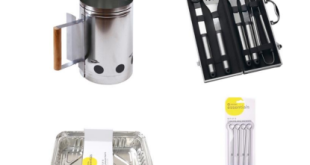 The British designer, manufacturer, and retailer of kitchens Wren Kitchens has collaborated with food futurist Tony Hunter of Future Cubed to find out which food and beverage trends to watch out for in 2020.
The British designer, manufacturer, and retailer of kitchens Wren Kitchens has collaborated with food futurist Tony Hunter of Future Cubed to find out which food and beverage trends to watch out for in 2020.
The trends are listed below (with comments by Wren Kitchens):
Meat/Plant Products: hybrid/blended products that deliver on meat flavour while incorporating the sustainability and health benefits of plant-based ingredients are predicted to grow in popularity. These represent a ‘soft entry’ point for those who want to reduce their meat consumption but can’t go as far as a full plant-based diet. Expect to see continuing innovation from beef with pea proteins and chicken with chickpeas to a hybrid superfood quinoa meat product.
Seaweed: We’re accustomed to seeing seaweed around sushi, but that’s just one of a number of uses for this versatile food. In fact, microalgae has one of the highest protein contents of any food, containing all the essential amino acids, as well as omega 3 fatty acids, carotenoids, vitamins, polysaccharides, and other beneficial ingredients. Seaweed is now showing up in food products including snacks, jerky and pasta. Any ‘ick’ factor seems to be declining as long as it’s not a 100% seaweed product, in which case people worry it’ll taste too ‘fishy’.
Functional Foods: We’re now increasingly looking for functional foods or nutraceuticals that will contribute to our overall wellness. This trend is being driven by the ageing population and the increasing realization that what we eat influences our mental and physical health. It covers everything from fermented foods to ‘moon milk’ (made from milk, spices and adaptogens – compounds promoting stress resistance). Combined with the gut health trend, functional foods have enormous growth potential in 2020 and beyond.
Gluten-Free: We saw cauliflower in pizza crusts in 2019, but that’s just the tip of the iceberg for possible alternative flours. This range includes bananas, chickpeas, tigernuts (a root vegetable), coconuts, sorghums, quinoa and various nut flours including almond, cashew and macadamia. With the wellness megatrend in full swing, expect to see more ‘boosted’ products with added protein, fibre and other functional and nutritional benefits.
Snacks go Healthy: The snacking trend shows no signs of abating in 2020 with the Mintel Consumer Snacking UK (2019) report showing that 66% of adults snack at least once every day. An Innova report shows that nearly a third of millennials replace meals with snacks because they’re busy, Gen-X consumers want to cut back on their sugar consumption, and boomers simply want an overall healthier diet. All of this means health-conscious, busy consumers are looking for convenient ways to satisfy their hunger and boost nutrition. But taste is still king with flavours such as maple bacon ranch, honey sriracha, and lemon truffle leading the charge in 2020.
‘Clean’ Keto: The Keto diet shows no sign of decline. The main issues with the diet are the potentially high amounts of saturated fats and low fibre content. To counter some of these claims, ‘clean’ keto is starting to be promoted. This version focuses on using avocados, nuts and seeds as fat sources, instead of ‘dirty’ keto, centred around foods such as beef brisket, butter, cheese and bacon. “What is keto?” was the second most popular google search term in the US in 2019. Perhaps “What is clean keto?” will top the 2020 charts?
Brain Health: Wellness is a major overarching trend in food and beverage, and this includes mental as well as physical wellness. Enter Nootropics, or ‘smart drugs’ which are substances that are claimed to boost brain performance, including cognition and memory. The most popular nootropic is actually very well known…caffeine! Others such as L-theanine, creatine, Ginkgo and Rhodiola and omega-3 fatty acids are also popular.
The New ‘Cool’ is 0%: Younger generations are drinking less than older generations, particularly boomers. But the usual substitute – soft drinks – is deemed to be far from cool! Enter ‘non-alcoholic spirits’ and a range of new soft drink flavour ingredients including pink peppercorns, cider vinegar, garden mint, sour cherry, Darjeeling tea, nutmeg, watermelon, basil, peach, ginger, lavender, fennel, ginseng and cardamom, to name but a few. Given these generational changes, the low- and no-alcohol market is expanding worldwide and we expect to see that continue in 2020. Beer is the most popular low alcohol beverage and wine is catching up fast, but the ‘non-alcoholic spirits’ and ‘non-alcoholic aperitifs’ are the most exciting segments.
Gut Feelings are In: It used to be that the only good bacteria are dead bacteria – but no longer. Gut health is a massively growing area with more and more evidence accumulating on the link between the gut microbiome and general physical and mental health. Couple this with the growing personal microbiome testing trend, and you have a recipe for rapid growth. The dairy aisle has been sleepy for quite a while, with plant-based invaders the major shakeup. But with the gut health trend gaining traction, new products like probiotic shots are something to watch. They are based on kefir and come in flavours such as pineapple + turmeric, vanilla + collagen, chai + matcha and chocolate + chaga.
 Housewares Business-to-business magazine for housewares retailers and their suppliers
Housewares Business-to-business magazine for housewares retailers and their suppliers



